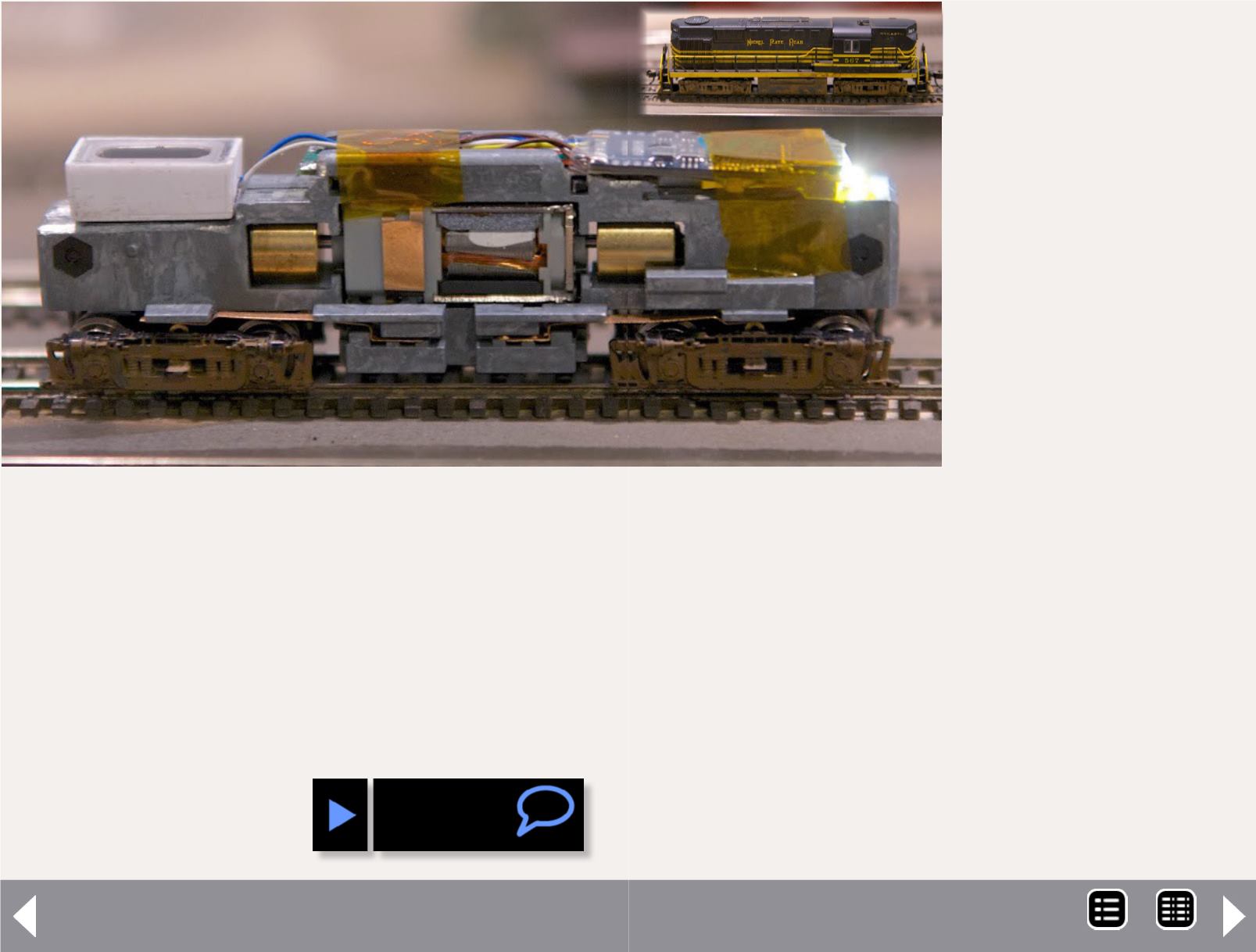
N scale sound - 1
W
hen digital sound decoders appeared on the market
several years ago, I was skeptical. Given the size of
N-scale models, I thought that sound installations
could never reproduce the sonic impact of a Berkshire steam
loco starting a train, or the deep vibration of an EMD 567C
V-16 prime mover in a GP9. But then I decided to try it, first in
the tender of a Walthers/LifeLike N-scale Berkshire.
What I realized is that while
my intuition about the “size”
of the sound produced was
Adding sound
– John D. Colombo
Photos by the author
correct, the sound appro-
priately matched the size
of the model. No, it did
not provide the impact of
the real thing, but I wasn’t
standing next to a 250-ton
fire-breather, either. I was
standing next to a 6” long
model. To have the full
impact of a real Berkshire
from two yards away would
have been out of place.
More importantly, hearing
the sounds of the chuffs,
bell and whistle added a
new dimension of realism
to operations. The chuffs
made me acutely aware of
the speed at which I was running my locomotives – no more
100-mph switching moves! The bell and whistle provided inter-
est at grade crossings, entering yards, starting and stopping
movements, and so forth.
While the size of N scale steam engine tenders made sound
installations relatively easy, N scale diesels were another story.
There just wasn’t enough room to accommodate even the
smallest speakers I had seen for sale by on-line DCC special-
ists, and the sound decoders also were just too big to fit in an
N scale diesel. But about two years ago, I started wondering
whether the technology existed to do sound installations in
N-scale diesels.
Because most N-scale diesel shells are only about 10-11 mm
wide inside, I would have to find a VERY small speaker with
Moving sound to
a smaller scale...
to an N scale diesel
MRH-Dec 2014


